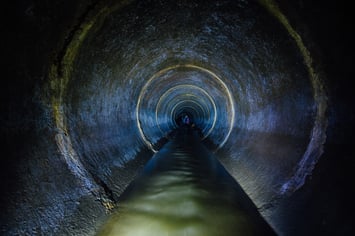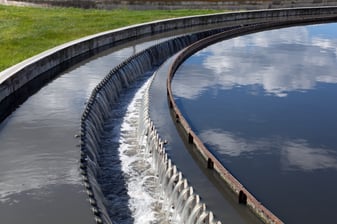The collection and transportation of wastewater to treatment plants is an essential task of public infrastructure, but what exactly is wastewater? In the broadest sense, wastewater is any water that has been put through residential, commercial or industrial use. But depending on the surrounding environment, wastewater may include any varieties of runoff that finds its way into sewer mains, and when mixed with the endless variety of human, animal and industrial waste produced by local residents and businesses, the result is a potentially toxic concoction that has as much potential to harm the local environment as it does to be cleaned and made into new drinking water.
Just 60 years ago, it was common practice for wastewater to be discharged directly into the environment, with little concern for the negative impacts it had on surrounding ecosystems and communities. However, with the passing of the Clean Water Act in 1972, regulations were put in place that set quality standards for surface water, implemented industry wastewater standards, and funded the construction of sewage treatment plants. Much of today’s wastewater infrastructure has been tailored to satisfy these regulations, and along with the transportation and treatment methods, the composition of wastewater has changed with time and become more complex than it once was.
Composition of Wastewater

Wastewater is most commonly distinguished as either blackwater or greywater. Blackwater is defined as any wastewater that contains organic material, such as human or animal waste. Toilets are the primary source of blackwater, though some states define it as including sinks where food particles enter the effluent stream. Ultimately, the most distinctive quality of blackwater is the inclusion of organic waste, which sometimes contains disease-causing pathogens and provides unique challenges in the water treatment process.
On the other hand, greywater comes from all other household sources, as well as agricultural runoff and stormwater. The fats, oils and grease from dishwashers, showers, sinks and other non-toilet drains are common contaminants in greywater, but heavy metals and other environmental contaminants from runoff sources also contribute. Where blackwater traditionally carries organic waste, greywater is made up of more inorganic materials, which have changed in composition over the years, namely with the introduction of microplastics in personal care products.
Chemically, wastewater is 99.9% water on average, but the remaining 0.1% is loaded with nitrogen, phosphorus, and potentially harmful microorganisms. Removing these three components is the focus of most water treatment plants, as they have potential to do the most harm to humans, animals and the environment. In particular, wastewater commonly contains the microorganisms that cause cholera, typhoid, hepatitis and dysentery, not to mention a variety of parasites. Furthermore, nitrogen and phosphorus have the potential to cause eutrophication (excessive richness of nutrients) in local waterways, if left untreated.
Transportation & Treatment
Infrastructure has evolved to contain wastewater in residential areas. Where once open channels were used to transport sewage, we now use networks of underground pipes with manhole access to prevent foul smells and disease-causing bacteria from affecting public health and the environment. Sewer inspection technology was developed to help wastewater professionals assess the quality of these pipes and manholes, allowing them to code defects and make decisions about sections that may need rehabilitation. Keeping sewer infrastructure clean, sealed and sturdy ensures that wastewater does not affect the surrounding area on its way to treatment plants, which are strategically built in low-lying areas away from urban life.

At the treatment plant, wastewater is run through a system of screens to remove large items that might affect the machinery in the plant. Clarifiers parse the wastewater into three layers: an oily scum on the surface, a collection of relatively clean water in the middle, and a thick sludge at the bottom. From there, the wastewater is aerated, enabling microorganisms to thrive and break down any remaining organic matter, while the sludge layer is moved to a digester that removes any harmful components and condenses it into biosolids. Once aerated, the water is no longer wastewater, and with a few more post-treatment steps, the water is either made ready for human consumption or discharged into a lake, river or ocean.
The management, transportation, and treatment of wastewater is an essential part of modern society, and we’ve come a long way since the days of open channel sewers and unregulated discharge of effluent. The Clean Water Act brought much needed attention to the laws involving the environmental impacts of wastewater, and technology is evolving every day to help us better understand, transport and treat wastewater for the improved health of our communities and ecosystems.
Inspection software like WinCan VX assists wastewater professionals in the assessment of sewer systems that securely transport wastewater to treatment plants. Learn more about WinCan with a free demo, and continue learning about sewer infrastructure with our Sewer Basics blog on sewer pipes:





